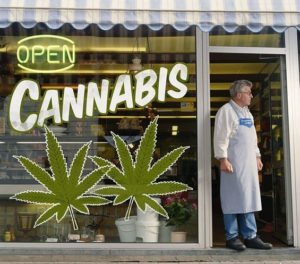This should not come as a revelation to anybody. How could it be otherwise?
Once cannabis is fully legalized, overall use of the drug inevitably increases. We’ve made it widely available, sold online or in convenient storefronts; begun collecting massive amounts of tax revenue; boosted sales with advertising in print and electronic media; praised its value as both medication and recreation – of course folks will snap it up.
In business terms, legalization benefits both lawful vendors and black market capitalists.
The report that follows simply documents the progression. It was issued last June by the United Nations Office on Drugs and Crime. Here’s a link to Reuters’ summary of its contents:
Cannabis Use Has Risen With Legalization and COVID Lockdowns: UN Report
A quote from the text: “Cannabis legalization appears to have accelerated the upwards trends in reported daily use of the drug…”
Not just cannabis, either. Other drug use appears to have escalated as well. Cannabis is still the world’s most popular drug of abuse — other than alcohol and tobacco, I suppose. They had a head start.
Apparently cannabis users under 18 haven’t been as much affected by legalization as other age groups. They still smoke pot at about the same rate as before. The real change has arrived in the form of “…a pronounced increase in reported frequent use of high-potency products among young adults.”
That’d be the eighteen to twenty-five year olds. Kids of college age and beyond. In 2023, that translates to those born between 1998 and 2005.
The Report does acknowledge the COVID pandemic as a factor. But, the authors note, cannabis use in Colorado and Washington state– the first two to implement legalization for recreational use– was already on the increase before the lockdown began.
Which brings us to the potency issue. As many others have observed, cannabis products available today have little in common with the far weaker marijuana ‘joints’ of the Sixties and Seventies. As it turns out, those were the good old days for experimentation, when THC concentration was relatively small, and adverse effects were by comparison quite rare.
That’s not the case today.
Meanwhile, the potency of pot products continues to rise. For regular users, that requires increased tolerance. That in turn is often followed by the appearance of withdrawal symptoms. When those emerge, users seek out stronger and stronger forms of the drug, in greater quantities, for more frequent use.
Could be a smart idea for outpatient providers in the addiction and mental health arenas to consider adding programming specifically addressing the prevention and treatment of Cannabis Use Disorder and its associated consequences.
Not just for young adults either. The fastest growing segment of cannabis users is probably senior citizens. They most often turn to cannabis for medical reasons. They’re still vulnerable to developing CUD.













